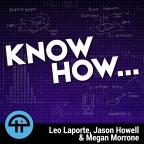
May 9th 2013
Know How... 43
Encrypt Your Data With TrueCrypt
Find out how to make sure no one but you can read your data using TrueCrypt.
Theory
Time to get secure. We're going to show you how and why to use TrueCrypt to protect your data from prying eyes.
TrueCrypt is an open source encryption application for on-the-fly encryption. What's "on the fly" encryption? That means that data is available as quickly as unencrypted data. This also means data is encrypted or decrypted right before it is saved or loaded.
TrueCrypt is a cross-platform solution (OS X, Windows, Linux). It installs a device driver into your OS which basically creates a virtual drive out of either a source file or a source partition."
A TrueCrypt file/folder/volume is absolutely useless without your password and/or keyfile. There are some boring things you might want secure: tax info, bank account data, finances (stopping identity theft even if you lose your machine, you're set).
Creating a file container
- How do we do this?
- Download TrueCrypt
- Create an encrypted file container
- Either pick a file or put a path
- Choose Encryption and Hash algorithm : Steve Gibson on Security Now says the defaults are sufficient. (but if you want, you can chain your encryption)
- Choose your Volume Size
- Password, Format option
- Then to create your encryption key, you've got to move a mouse cursor around the window. the longer you move the cursor, the stronger the key
- Then you format
If you're going to use the Truecrypt volume on a USB drive, you probably want to keep the Truecrypt.EXE or app on the USB drive.
Hidden volumes
From Truecrypt.org:
A hidden volume can be mounted the same way as a standard TrueCrypt volume: Click Select File or Select Device to select the outer/host volume (important: make sure the volume is not mounted). Then click Mount, and enter the password for the hidden volume. Whether the hidden or the outer volume will be mounted is determined by the entered password (i.e., when you enter the password for the outer volume, then the outer volume will be mounted; when you enter the password for the hidden volume, the hidden volume will be mounted).
Connect with us!
Download or subscribe to this show at https://twit.tv/shows/know-how.
Contribute to our show! Send us an email at knowhow@twit.tv
Thanks to CacheFly for the bandwidth for this show.




